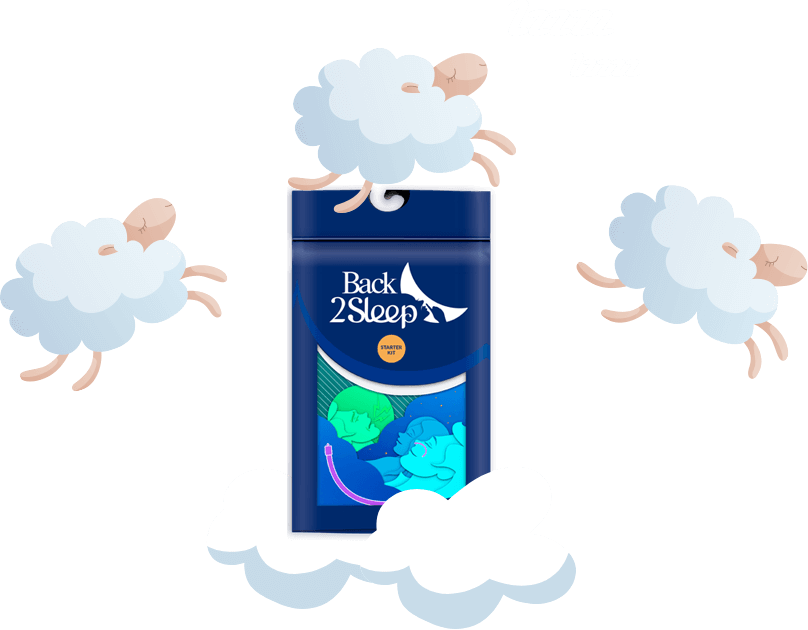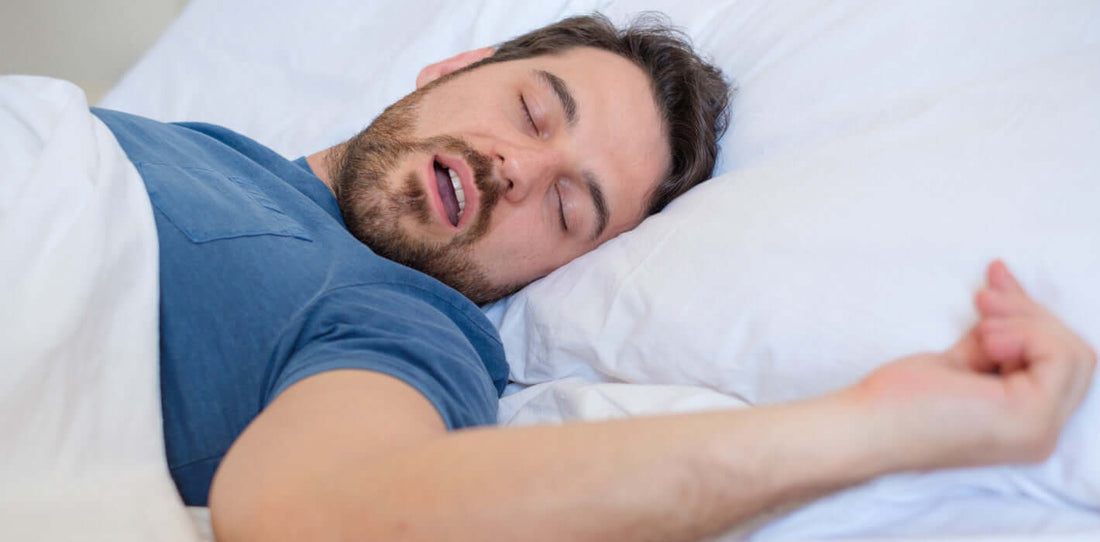Sleep apnea, or more precisely Obstructive Sleep Apnea Syndrome (OSAS) and/or Obstructive Hypopnea Syndrome (OHOS), is a sleep disorder. It is characterized by repeated or prolonged interruptions in breathing during sleep.
This condition impacts sleep quality and can lead to various health issues. To better understand the diagnosis and to implement effective treatments, it’s essential to recognize and comprehend the four types of sleep apnea. What are the symptoms? What causes it? What treatments are available? What are the risks of sleep apnea?
Follow this guide for detailed insights.
What Are the Different Types of Sleep Apnea?
Before delving deeper, understanding the various types of sleep apnea is crucial. Here are the four types:
- Central Sleep Apnea (CSA)
- Obstructive Sleep Apnea (OSA)
- Mixed Sleep Apnea
- Obesity Hypoventilation Syndrome (OHS)
Central Sleep Apnea (CSA)
Central Sleep Apnea is the least common type of sleep apnea. It stems from a disruption in the brain’s control over breathing, particularly in the brainstem.
During sleep, individuals with CSA may experience pauses in breathing or shallow, slower breaths. The causes are diverse, including stroke, brain infections (encephalitis), congenital brain defects, opioid use, certain medications, or high-altitude exposure. CSA is also observed in individuals with heart failure.
Obstructive Sleep Apnea (OSA)
Obstructive Sleep Apnea is the most common form of sleep apnea. It occurs due to repeated throat closure or obstruction of the upper airways during sleep.
The airways, which span from the mouth and nose to the throat and larynx, may shift position during breathing. This type of apnea commonly affects people who are obese, though it can occur in individuals of any weight. A diagnosis of sleep apnea is confirmed when:
- Breathing interruptions occur during sleep,
- At least five interruptions happen in an hour,
- Each interruption lasts over 10 seconds.
Causes include obesity, aging, and factors leading to airway narrowing. Alcohol and sedative use can worsen the condition. Having a narrow throat or thick neck, hyperthyroidism, gastroesophageal reflux disease, acromegaly, and stroke also contribute to OSA. Snoring is a prevalent symptom, but not all who snore have sleep apnea.
Mixed Sleep Apnea
Mixed Sleep Apnea is a combination of central and obstructive apnea. It begins as a central respiratory event, followed by an obstructive one.
Obesity Hypoventilation Syndrome (OHS)
In OHS, obesity causes hypoventilation, meaning breathing becomes too shallow or slow. The body exerts extra effort to breathe, exhausting the respiratory system, which can increase carbon dioxide levels in the blood. Excess fat around the neck compresses the upper airways, restricting airflow.
Risk Factors and Aggravating Factors of Sleep Apnea
Sleep apnea is approximately twice as prevalent in men as in women. Risk factors for different types of sleep apnea include:
- Age: Aging leads to muscle tone loss in the upper airways, facilitating pharyngeal collapse.
- Overweight/Obesity: Excess fat deposits around the pharyngeal passage narrow the airways.
- Maxillofacial Profile: Certain facial structures, such as retrognathism or dental misalignment, increase risk.
- Lifestyle Factors: Alcohol consumption, smoking, medication use, or sleeping on one’s back exacerbate sleep apnea.
Consequences of Untreated Sleep Apnea
Untreated sleep apnea leads to various symptoms, including:
- Restless sleep,
- Snoring,
- Breathing interruptions,
- Loud gasping upon resumption of breathing,
- Frequent nighttime urination.
Sleep apnea disrupts quality of life, causing fatigue, daytime sleepiness, irritability, concentration issues, and memory loss. Social and emotional well-being may also suffer, leading to isolation or depression. Professionally, untreated apnea can have negative effects as well.
In the long term, it increases risks of cardiovascular and metabolic issues, hypertension, arrhythmias, atherosclerosis, and type 2 diabetes, raising chances of heart attack or stroke.
Diagnosis and Treatment Options
To diagnose sleep apnea, specialists use tailored evaluations, including:
-
Nocturnal Ventilatory Polygraphy: This records breathing for at least six hours using devices like nasal pressure sensors, abdominal and thoracic belts, snoring sound detectors, and pulse oximeters for blood oxygen levels.
-
Polysomnography: A more comprehensive exam, it determines the severity of sleep apnea. It combines:
- Electroencephalogram for brain activity,
- Electromyogram for muscle activity,
- Electro-oculogram for eye movements,
- Electrocardiogram for heart activity,
- Respiratory sensors included in polygraphy.
Home monitoring with connected devices over several nights can enhance diagnostic accuracy.
Treatment options include medication, medical devices like positive pressure therapy or oral appliances, and even hypoglossal nerve stimulation implants. Nasal devices, such as those from Back2Sleep, are also effective.
Conclusion
If you experience persistent fatigue, restless sleep, or frequent daytime drowsiness, you may have sleep apnea. Share all symptoms of poor sleep, general malaise, and irritability with your doctor.
Your physician can refer you to a sleep apnea specialist who will determine the severity of your condition and recommend appropriate treatment.
FAQ
What is the normal number of sleep apnea episodes?
- 5–15 episodes: Mild apnea
- 16–30 episodes: Moderate apnea
- Over 30 episodes: Severe apnea.
What illnesses can cause sleep apnea?
A stroke may trigger obstructive sleep apnea. Sleep apnea is often hereditary and linked to factors like age and obesity.
What worsens sleep apnea?
Overweight and obesity are major risk factors. Fat deposits around the pharynx encourage airway obstruction during sleep.
What is obstructive sleep apnea?
Obstructive Sleep Apnea is the most common sleep-related breathing disorder, marked by recurring episodes of partial or complete airway blockage during sleep.








